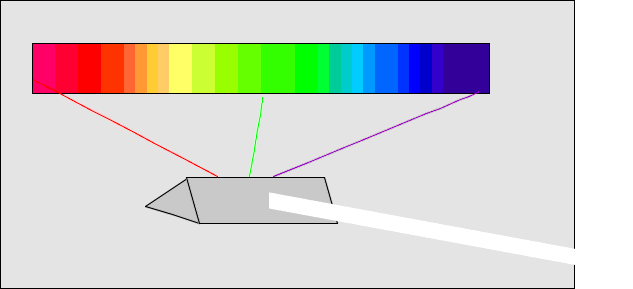
We see simple light waves (those with only one frequency) as one of the colours of the rainbow. Combining together two or more sine waves of light produces a more complex colour. The more frequencies you add, the whiter the resulting colour gets. With light, you can easily separate the frequencies by shining the complex light wave through a prism.

The set of frequencies in a light wave (as separated by a prism) is called its spectrum.
Scientists can identify different substances by looking at the spectrum of the light that the substances emit when they're heated. Iron will glow with a different set of frequencies than nickel or sulphur.
The situation is similar with sound. The complex sound wave for an [i] vowel will be composed of a different pattern of frequencies than the complex wave for an [a].
We need a way to separate a complex sound wave out into its component frequencies (and their amplitudes) so that we can see what makes vowels different from each other. A spectrograph machine is essentially just a prism for sound.